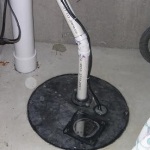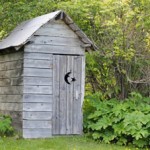Standby Generator Installation Cost
Average Materials Cost: $2,500 - $7,500 based on capacity of the generator
Average Labor Cost: $1,000 - $2,500
Avg. Time to Complete: This job typically takes a crew of 2-3 a day to complete
Usually Includes: An electrical generator, sand and concrete for a pad if needed, a subpanel and transfer switch, additional wiring and labor costs.
Due to the sharp increase in blackouts caused by unprecedented stress on the energy grid and the rise in severe weather, energy experts recommend that every home have a standby generator to provide electricity when the power fails.
A standby generator is one that is wired into your home’s electrical panel and can produce enough power to meet most or all of the home’s electrical demand. At minimum, the generator will supply enough electricity to run the HVAC system, basic lighting, the well if there is one, the sump pump and a few appliances.
The generator is often housed in the garage, but can also be installed in a basement or crawlspace or an exterior structure such as a shed. These generators are powered by natural gas or propane.
In this installation cost guide, you will get information about standby generator prices for the unit and for installation.
Standby Generator Installation Equipment and Steps to Installation
Here are the project steps for installing a standby electrical generator. A contractor should provide you with an itemized estimate that includes these parts and installation costs.
- Selecting an 8,000 (8 kW) to 60,000 (60kW) watt generator depending on the size of your home and whether or not you want to run everything or just selected electrical circuits
- Choosing a suitable location for the generator – a garage is best, if there is room
- Installing 100 or 200 Amp Transfer Switch that allows a seamless transition from power supplied by the electrical grid to the generator producing power
- Installing sub-panel that controls the generator
- Mounting a wired or wireless monitor for inside your home to monitor the generator’s performance
- Wiring the standby generator to your electrical box
- Getting a permit from the local building codes department
- Connecting the generator to the natural gas line running to the home or to a propane tank
- The installation of a propane tank, if needed, or exchanging a 300-500 gallon propane tank for a 1000 gallon tank if the home already uses propane for the heating system
- The installation of a shed to house the generator, if there is no garage or room in the garage – an optional step because most generators are built with protective cabinets to handle weather
- The installation of a concrete pad for a generator installed in a shed or outside
- The addition of surge protectors for electronic components that could otherwise be damaged through the switching from the grid to the generator and back
Note on Generator Capacity: The size of the generator that is right for your application can be determined by an electrical contractor or you can do it yourself. You’ll have to add up the electrical demand of your home’s lighting, electronics, well, sump pump, HVAC system, etc.
Is a Standby Generator a Do it Yourself Project?
The general rule of thumb among handy DIY homeowners is to leave work on electrical panels to the pros. No home projects are more dangerous to complete, and electrical projects MUST be done properly to ensure against fire or shock later.
There are certainly aspects of the work you can do, such as pouring a 4-inch pad for the generator, building or assembling a shed or assisting an electrical contractor in running wire.
Costs & Factors that Affect Generator Installation Costs
The largest factor is the size of the generator and the required sub-panel. Here is what you’ll find for the generator plus installation:
- 7 kW to 12 kW: $2,500 to $5,000
- 15 kW to 25 kW: $4,500 to $8,000
- 30 kW to 60 kW: $8,000 to $15,000
Expect the cost of installation to be $1,500 to $3,000, depending on the complexity of the work and the distance the generator is installed from the home.
Here’s a chart with a rough idea of what you’ll need if you’re going to supply electricity to the entire house:
- 1,000 to 1,500 square feet: 7,000 to 12,000 Watts
- 1,501 to 2,000 square feet: 10,000 watts to 20,000 watts
- 2,001 to 3,000 square feet: 1,500 watts to 30,000 watts
- More than 3,000 square feet: 20,000 watts or more
The size is determined in large part by the amount of lighting, size of the HVAC system, water heater capacity and the amount of electronics in your home. In addition, electric water heaters, clothes dryers and furnaces use 3-5 times more electricity than gas-powered units.
The other major factor affecting standby generator installation costs is whether or not you need a shed and concrete pad for installation outside the garage. The cost of a concrete pad will be $100 to $300 depending on whether or not you do it yourself. A minimum 6×6 shed will be needed, and costs range from $500 and up depending on materials and whether or not you build/assemble it yourself.
Ways to Save Money on Electrical Generator Costs
We’ve mentioned pouring the pad and building or assembling a shed, if needed, yourself. You can also save money by:
- Choosing a smaller generator to run just essential electrical systems and components rather than powering the entire home
- Choosing gas appliances over electric, so a smaller generator is needed
- Assist the electrical contractor
- Hand-dig the trench required for wiring, if installing outside the garage or house
- Getting multiple estimates from electrical contractors that know they are competing for the work
Do you have other ideas for cutting generator installation costs? Join the discussion below with your ideas and comments.
Resources to Learn More about Sump Pump Installation
Here’s a video showing the installation of an outdoor backup electrical generator.
https://www.youtube.com/watch?v=fLjHPKkIMWo
Here’s a brochure from the State of Montana Disaster & Emergency Services department entitled, “Safely Installing your Standby Generator.”
http://montanadma.org/sites/default/files/genbrochurev3.PDFTh
The Hartford Courant newspaper provides good tips for selecting the right standby generator for your home.
This generator sales company offers advice for selecting the right-sized generator for your home.


 Over the Range Microwave Installation Cost
Over the Range Microwave Installation Cost Sump Pump Installation Cost
Sump Pump Installation Cost Septic Tank Installation Cost Comparison
Septic Tank Installation Cost Comparison Split Rail Fence Installation Cost
Split Rail Fence Installation Cost